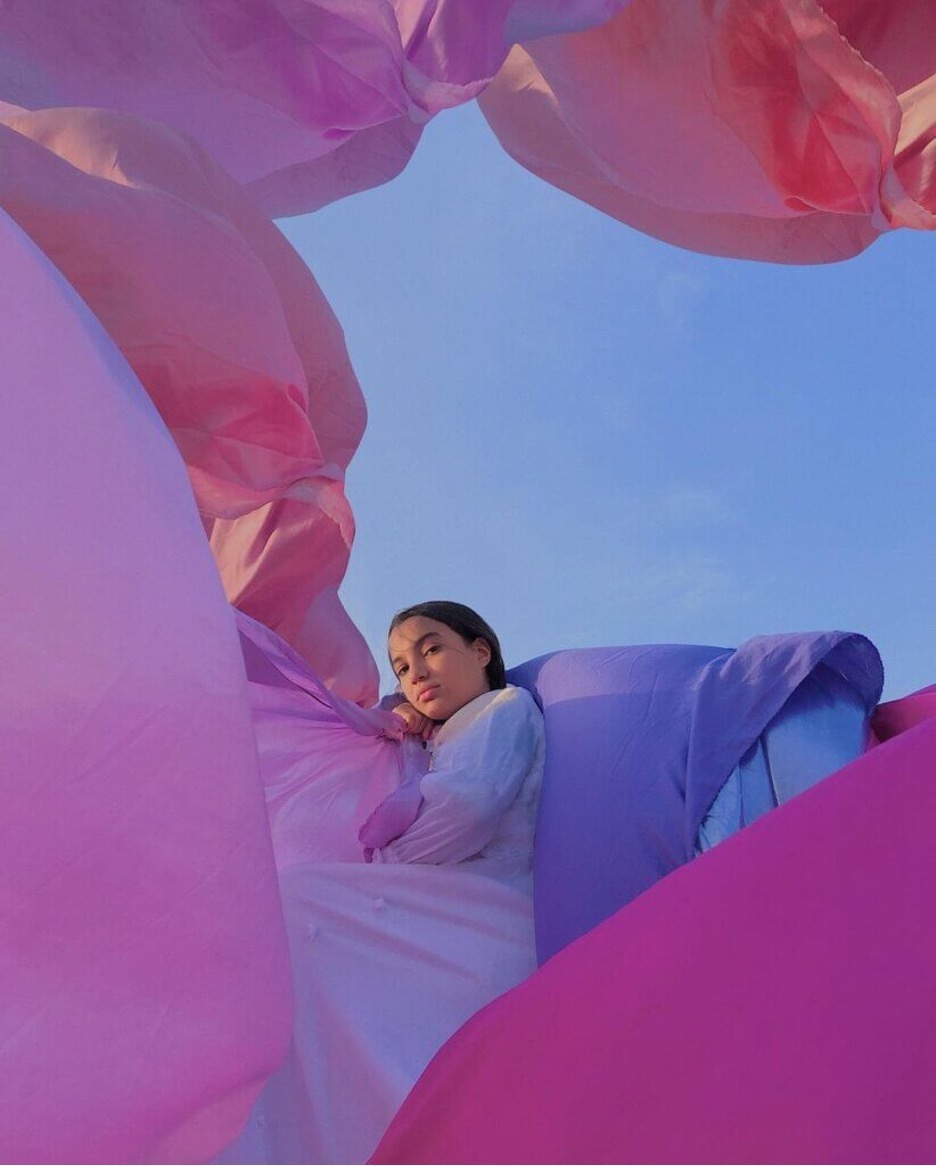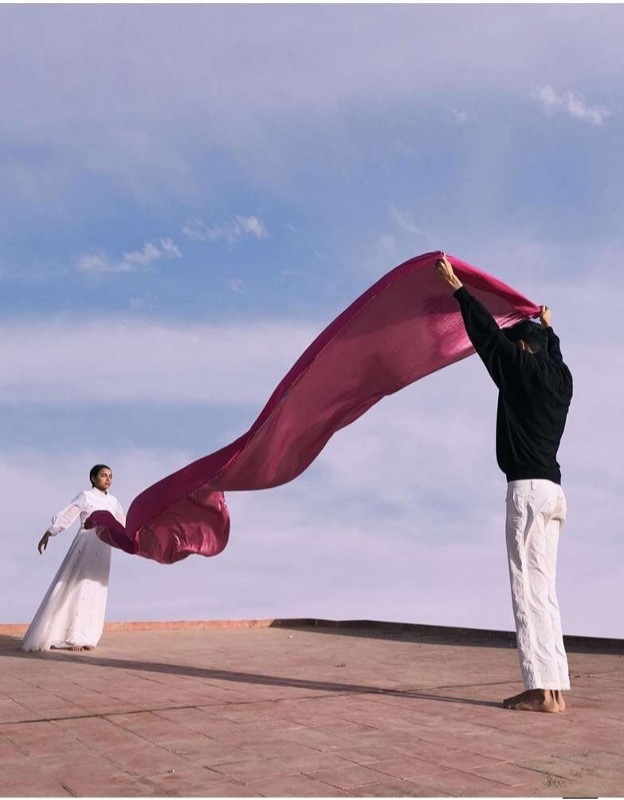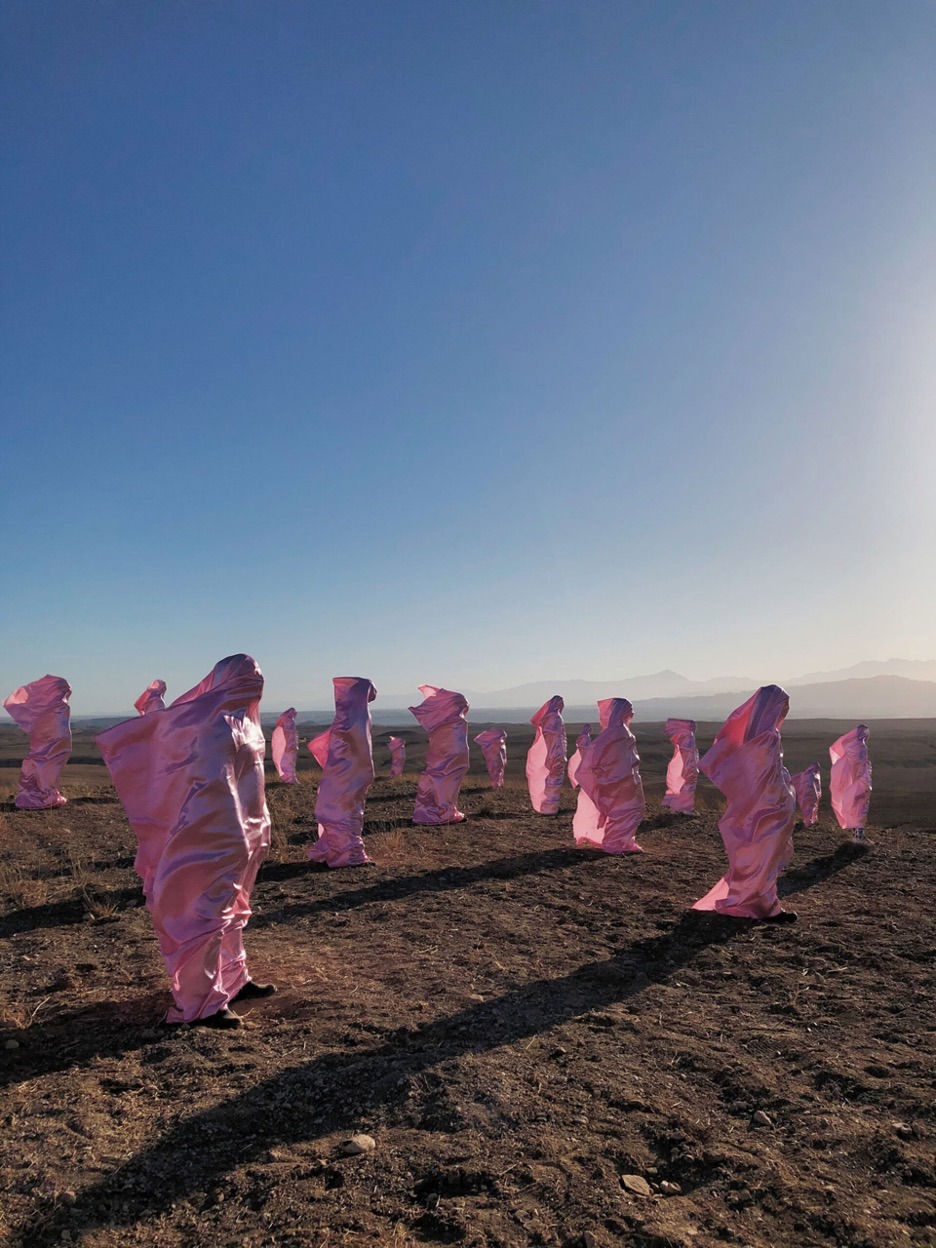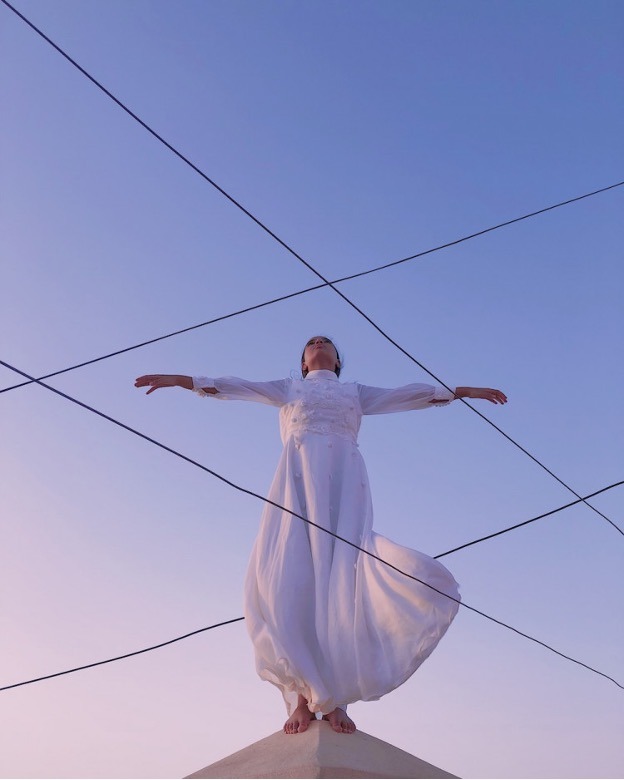Photo Essay: Ismail Zaidy’s 3aila
Chaos, noise, and clutter have taken a strong hold over our existence and our broader perception of the world. We might close our eyes every so often, hoping to visually access calm and ease. It’s an innate human condition to want to tap into a state of equilibrium and balance from within, but can we ever achieve consistent tranquility?
Perhaps not. Yet, a glimpse into the aesthetically mesmerizing world of Ismail Zaidy will awaken your senses and nudge you closer to a state of peace, even if for a moment. From the richness of the colours to the softness of various traditional textiles that fluidly merge within his compositions, Zaidy’s images take on a symbolic form, communicating to the viewer what he may not find possible with words.
The 22-year-old, self-taught photographer transports viewers to sites of Morocco that are oft unseen by the average tourist, exposing hints of truth about Moroccan culture. Zaidy reclaims narratives about family, communication, and womanhood through his aerial images and ultra-posed subjects that orient viewers into a dream-like state.
As I explore photographic interiors in Zaidy’s photo collection titled 3aila, which translates to family, I grapple with idea of how family relations can be both compressed and visualized through imagery. Zaidy’s photos help us reckon with the invisible difficulties around communication that permeate familial relationships: taboo topics that are not communicated, but also the overarching belief that difficulties themselves cannot be spoken about. Exploring materiality, emotions, interactions, and invisible tensions, I use photographic interiors to unravel Zaidy’s process of documenting the multiplicity of his family life, including elements of intimacy and spirituality, particularly in a Middle Eastern home.


What sets Zaidy apart from others that photograph the mundane in Morocco is the fact that his sole tool is his Samsung phone, and his studio was self-made on the roof of his home, which produces an immediate form of intimacy. Zaidy invites us to focus on simplicity through his work and question what it means to create out of convenience, accessibility, and relatability. Out of necessity, he documents subjects and objects from his daily life, which draw us closer to the lived understanding of the quotidian in Morocco. The angles through which he approaches his subjects in Figures 1, 2, 4, whom are all members of his immediate family, injects a level of authenticity to our understanding of the Moroccan lifestyle and recalibrates our interpretation of North African tradition, void of the orientalist gaze.

Additionally, Zaidy has a magical way of utilizing and manipulating the space in his images that help carry the viewer to a different place. He delicately balances which elements of the geographical environment he wants to show, and with a single glance he leaves the viewer questioning where they have been carried to. Employing a considerable amount of distance between himself and the subject through a form of aerial photography, we see the relationship between the subjects in the foreground and the sky in the background in Figures 1-4, which conveys nomadic emotions of both escapism and liberation. In Figure 4, we see the subject elevated into the warm-toned sky with arms wide open. The layered lines add a sense of tightness to the backdrop constricting the subjects reach, gesturing that even amongst the vastness of the horizon, the human can still feel restricted.
While Zaidy’s photographs certainly evoke an emotion response, it is essential to reflect on how he wants to achieve this. In Figure 2, the subjects don’t seem to be engaging in any obvious activities, rather they seem to be in a state of natural playfulness, depicting the childlike qualities that tend to takeover when one spends time with their siblings. Paired with the barren desertscape of Morocco, emotions of harmony and non-verbal love connection are elicited. As with his messaging, the emotions infused into his imagery are subtle. Most subjects in his photographs lack any facial expression, or their faces are covered entirely. The sublimity of his work is that the subjects aren’t responsible for conveying emotion, but rather the image itself is. Zaidy’s vernacular image becomes one that expresses outside of our conventional understanding – it both removes and seeks assumption.

Through most images in 3aila, Zaidy draws in the viewer through his deliberate manipulation of space, light, and a velvety colour palette inspired by the serene landscapes of Morocco, which all work to trigger multiple sensory experiences. While the repetition of bold pinks might convey Zaidy’s love for pastel hues, they also come together to embody a beauty akin to what one might assume a poem would look like. Using very minimal props, Zaidy plays with materiality using free-flowing translucent garments including the hijab or the haik that amplify fluidity in his otherwise stagnant images.
"When I was a kid, I used to live in a modest area in Marrakech where I was watching the way the women would wear their fabrics, haik and djellaba out on the streets. These women are still a huge inspiration for me today” (Ebert). Each of Zaidy’s images relay a form of stillness, as if he is speaking a fixed truth that originates from a place of clarity and deep understanding of the realities of Morocco. I believe Zaidy does this to illustrate his perception of the Moroccan woman based on notions of equality and abundance, distanced from traditional orientalist stereotypes.
The color and motions of the pink scarves in Figure 1 implore us to think about the veil as an icon of womanhood. The contrast introduced by the colours help to emphasize the exterior visibility of veiled women, while the powerful movement of each garment indicates a sense of freedom and care-free boundlessness. The composition of static, soft, coloured scarves might also point to the interplay between modesty and playfulness. Zaidy’s work acts as a self-study that forces us to forego our rigid assumptions about religion by exposing us to different ways of seeing, and in a way prompts us to approach our own selves without assumption.
When I was a kid, I used to live in a modest area in Marrakech where I was watching the way the women would wear their fabrics, haik and djellaba out on the streets. These women are still a huge inspiration for me today”
In Figure 3, I see Zaidy employ his minimalistic direction to expose us to the interiors about non-verbal, unseen familial tensions. Assembled identically, one perceives a homogeny and togetherness amongst this group of subjects. The synchronized arrangement of individuals atop the soil of the earth hints at an informal lineage, and perhaps depicts generations of Zaidy’s family which would otherwise be invisible. The subjects that we most often see are his siblings or his mother, but the assemblage of veiled individuals, with their faces, genders, and expressions hidden, draw me to view the souls of these individuals rather than their personhood. While the soft pink garments deliver a sense of cheerfulness, there is a clear tension that points to an inability to communicate. We see a juxtaposition between the sharp colours and the fluidity of the garments, which almost plays a metaphorical role in the constraints felt by the body and the suppressed voices of the subjects. Set to the backdrop of an expansive Moroccan sky, it feels as though each figure wants to scream into the vastness of the land but has been prevented to do so. The way the garment seems to entrap the bodies, it communicates more than just the muffling of voices, but an overpowering sense of suffocation.
Post a comment